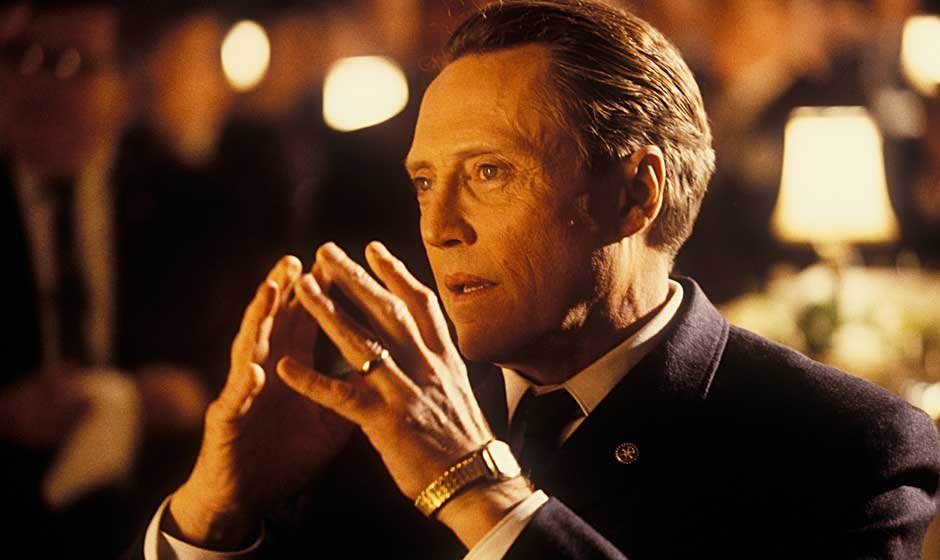Who is Ken Walken?
Most people know the name Christopher Walken, but few remember his older brother Ken Walken, who actually broke into show business first. Born Kenneth Walken on July 22, 1938, in Queens, New York, Ken was already making waves in early television when his younger brother was still learning to walk.
Ken’s story isn’t just about being related to a famous actor. He was genuinely part of something special—the birth of television as we know it. Back in the late 1940s and 1950s, TV was this wild, experimental medium where anything could happen.
Ken Walken appeared in over a dozen television shows between 1947 and 1960, working alongside some of the biggest names in early broadcasting. His performances helped shape what television drama would become. Yet somehow, his contributions have been largely forgotten by entertainment historians.
Growing Up in Queens During TV’s Birth
The Walken family lived in Queens at exactly the right time and place. Manhattan was buzzing with new television studios, and producers were constantly looking for fresh talent. Ken, Christopher, and their brother Glenn all caught the acting bug early.
Their parents must have been pretty forward-thinking. While other families might have been skeptical about this new “television” thing, the Walkens embraced it. They saw opportunities where others saw uncertainty.
Ken was the guinea pig, in a way. He tested the waters of professional acting while his younger brothers watched and learned. The family’s Queens location meant Ken could easily get to auditions and rehearsals in Manhattan without the long commutes that might have discouraged other young performers.
Growing up during the transition from radio to television gave Ken a unique perspective. He witnessed firsthand how entertainment was changing, and he adapted quickly to television’s demands.
Ken Walken’s First Steps in Television
Picture this: it’s 1947, and television is still so new that most people have never seen a TV set. Ken Walken, just nine years old, lands a role on “Kraft Theatre,” one of the very first anthology drama series on television.
This wasn’t like today’s television, where you can do multiple takes and fix mistakes in editing. Everything was broadcast live. One mistake, and millions of viewers would see it. Talk about pressure for a kid!
Ken proved he could handle it. His natural talent and quick learning ability made him a favorite among directors and producers. In an industry desperate for reliable young performers, Ken Walken became a go-to choice.
The timing couldn’t have been better. Television networks were expanding their programming, creating more opportunities for actors like Ken. He rode this wave of growth, appearing on show after show throughout the early 1950s.
What’s remarkable is how Ken adapted to television’s unique demands. Unlike theater, where you could project to the back row, television required more subtle, intimate performances. Ken mastered this new style of acting while he was still a child.
Television Career Highlights That Made Ken Walken a Household Name
Ken’s breakout moment came in 1954 when he played Juliet on CBS’s “You Are There.” Yes, you read that right—he played Juliet, Shakespeare’s famous heroine. This wasn’t unusual for the time, when young male actors often played female roles in television adaptations.
His performance was so convincing that it opened doors to bigger opportunities. “The Big Story” became Ken’s most consistent work, featuring him in four different episodes between 1953 and 1957. Playing characters named Clinton and Young Todd, Ken showed his range and reliability.
But Ken Walken wasn’t just doing serious drama. He appeared on “Johnny Staccato” as Dick Potter, showing he could handle detective shows too. His role as a parking lot attendant on “Perry Mason” might seem small, but it was actually a big deal—Perry Mason was one of television’s most popular shows.
“Lux Video Theatre” represented the pinnacle of 1950s television prestige. When Ken appeared as Martin in 1953, he was working with some of the best directors and actors in the business. This wasn’t just any TV show—it was television’s equivalent of Broadway.
Ken’s versatility impressed everyone who worked with him. He could do historical drama one week, contemporary mystery the next. This adaptability made him incredibly valuable in an era when television was still figuring out what it wanted to be.
Ken Walken’s Brief Film Career
By the late 1950s, Ken decided to try his luck in movies. His film debut came with “The Blue Angel” in 1959, where he played a student named Ertzum. Though the role was uncredited, it marked Ken’s transition from television to cinema.
“All the Fine Young Cannibals” in 1960 would be Ken’s final film appearance. Again playing a student, this uncredited role represented the end of his acting career. He was just 22 years old when he decided to step away from performing.
The film industry in 1960 was very different from television. Movies required different skills, different timing, and frankly, different connections. Ken had mastered television, but film was a whole new challenge.
Looking back, Ken’s brief film career seems almost like an experiment. He’d conquered television, so why not try movies? But by 1960, he was ready for something different entirely.
The Walken Brothers and Their Entertainment Dynasty
Here’s where the story gets really interesting. Ken wasn’t the only Walken brother in show business. Christopher and Glenn both followed in his footsteps, appearing in various television shows during the 1950s.
Ken, being the oldest, essentially paved the way for his brothers. His success in television proved that the Walken family had what it took to succeed in entertainment. Christopher, in particular, seemed to learn a lot from watching Ken’s career.
The three brothers supported each other throughout their early careers. They understood the unique pressures of child acting and the entertainment industry in ways that outsiders couldn’t. This family bond probably helped all of them navigate the challenges of show business.
While Christopher went on to become a Hollywood legend, Ken’s early success laid the groundwork for the family’s entertainment legacy. Without Ken’s pioneering work in television, who knows if Christopher would have had the same opportunities?
Why Ken Walken Chose Privacy Over Fame
In the early 1960s, Ken Walken made a decision that surprised everyone who knew him. He walked away from acting completely. No farewell tour, no big announcement—he just stopped.
This wasn’t because his career was failing. Ken was still getting offers, still had connections in the industry. He simply decided that acting wasn’t what he wanted to do with his life anymore.
While Christopher’s star was rising throughout the 1970s and 1980s, Ken maintained his privacy. He didn’t give interviews about his famous brother or try to capitalize on the family connection. He chose a quiet life away from the spotlight.
Ken’s decision shows remarkable self-awareness. Many child actors struggle with the transition to adult careers, but Ken avoided that trap entirely by making a clean break. At 87 years old today, he’s successfully maintained his privacy for over 60 years.
Ken Walken’s Lasting Impact on Television History
Ken Walken may not be a household name today, but his contributions to early television were significant. He was part of the first generation of actors who proved that television could be a legitimate artistic medium, not just a novelty.
His work on prestigious anthology series helped establish the dramatic standards that television still follows today. Shows like “Kraft Theatre” and “Lux Video Theatre” set the bar for quality television programming.
Ken’s professionalism and reliability as a child actor also helped change how the industry worked with young performers. His success showed that children could handle complex dramatic material and work under the pressure of live television.
The Walken family’s collective contribution to entertainment history begins with Ken’s pioneering television work. His early success created opportunities and connections that benefited the entire family for generations.
Today, when we watch sophisticated television dramas, we’re seeing the evolution of a medium that Ken Walken helped create. His work in the 1950s laid the foundation for everything that came after.










